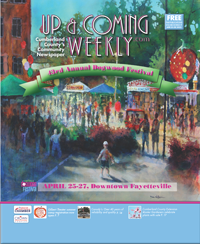 Parents often do everything within their means to keep their children safe in and outside of their homes. Throughout the years, child safety seats have helped reduce the risk of serious injuries to children while riding in vehicles. However, incidents of hot car injuries and deaths have increased.
Parents often do everything within their means to keep their children safe in and outside of their homes. Throughout the years, child safety seats have helped reduce the risk of serious injuries to children while riding in vehicles. However, incidents of hot car injuries and deaths have increased.
The National Highway Traffic Safety Administration indicates about 40 children a year die from heatstroke after they were left or became trapped in a car. Roughly one child every 10 days loses his or her life in a hot car. The NHTSA also says there have been more than 950 hot car deaths among children since 1998. The National Safety Council says nearly every state has experienced at least one death of a child succumbing to heat stroke in a hot car since 1998. The agency reports that a record number of 53 children died after being left in hot vehicles in 2018 and 2019.
Pediatric vehicular heatstroke (PVH) poses a serious threat. Health experts warn that a child's body temperature rises three to five times faster than an adult 's. When a child remains in a vehicle without ample ventilation, that child's body temperature can rise quickly, turning into a dangerous situation. Heatstroke begins when the core body temperature reaches about 104 F.
Many children who were injured or killed in PVH incidents have parents and caregivers who are thoughtful guardians. No one sets out to forget their child in a car. Since younger children sit rear-facing in safety seats, sometimes their presence is obscured. Those who are rushing around or parents with miscommunication may not realize their child is in the car seat. It is essential that parents and caregivers get in the habit of always checking the back seat before locking the car doors. Heeding some additional tips also can prevent PVH.
• Leave your purse, wallet or another item in the back seat so you are forced to go in the back to retrieve it. This is an added security measure to check the back seat and ensure the car seat is empty.
• Never leave a child in a vehicle unattended for any length of time, even if you only intend to run into a store for a few minutes. Rolling down the windows or parking the car in the shade does little to adjust the interior temperature of the vehicle.
• Write a note or place a stuffed animal in the passenger's seat to remind you that a child is in the back seat.
• Keep the car locked and keys out of reach. Children being forgotten in the car is not the only cause of PVH incidences. Sometimes kids hide or play in cars and become trapped. The NHTSA says 25 percent of PVH deaths occur after kids gain access to unattended vehicles.
• Be an observant bystander at all times. If you see a child alone in a vehicle, make sure the child is alright and responsive, then attempt to locate the parents. If the child seems in distress, attempt to break the window of the car and call for emergency services immediately.
Instances of PVH and similar accidents are not exclusive to summertime. A car can become hot quickly even if the temperature outdoors seems relatively mild, says Consumer Reports.
Various strategies can help prevent hot car injuries and deaths in children.
Prevent hot car emergencies with children
- Details
- Written by Staff Report

 How to resolve AdBlock issue?
How to resolve AdBlock issue? 









